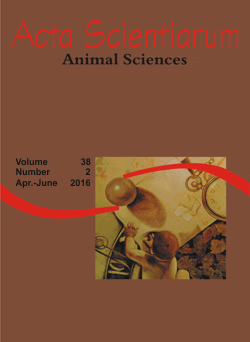<b>Productivity of japanese quails in relation to body weight at the end of the rearing phase
Resumo
Two experiments were conducted at different times with the objective of investigating how the body weight of Japanese quails at the end of the rearing period may alter the performance during the laying phase. In both experiments, the birds were distributed in five treatments according to their body weights, which were obtained at 42 and 35 days of age for the first and second experiments respectively, and the following categories were considered for said experiments: very light, light, average, heavy and very heavy. For both experiments, the treatments were distributed in a randomized block design, at eight repetitions per treatment for the first one and six for the second one, both at 18 birds per repetition. During the first experiment, sexual maturity, laying percentage, marketable egg percentage, average egg weight and egg mass, in second experiment, feed consumption, final body weight, eggs per bird present, laying percentage, average egg weight, egg mass and alimentary conversion were evaluated. The results obtained show that Japanese quails whose body weight is lower than 140 grams at 42 days of age, or lower than 120 grams at 35 days of age show significantly worse productive results during the laying phase.
Downloads
DECLARAÇÃO DE ORIGINALIDADE E DIREITOS AUTORAIS
Declaro que o presente artigo é original, não tendo sido submetido à publicação em qualquer outro periódico nacional ou internacional, quer seja em parte ou em sua totalidade.
Os direitos autorais pertencem exclusivamente aos autores. Os direitos de licenciamento utilizados pelo periódico é a licença Creative Commons Attribution 4.0 (CC BY 4.0): são permitidos o compartilhamento (cópia e distribuição do material em qualqer meio ou formato) e adaptação (remix, transformação e criação de material a partir do conteúdo assim licenciado para quaisquer fins, inclusive comerciais.
Recomenda-se a leitura desse link para maiores informações sobre o tema: fornecimento de créditos e referências de forma correta, entre outros detalhes cruciais para uso adequado do material licenciado.








































